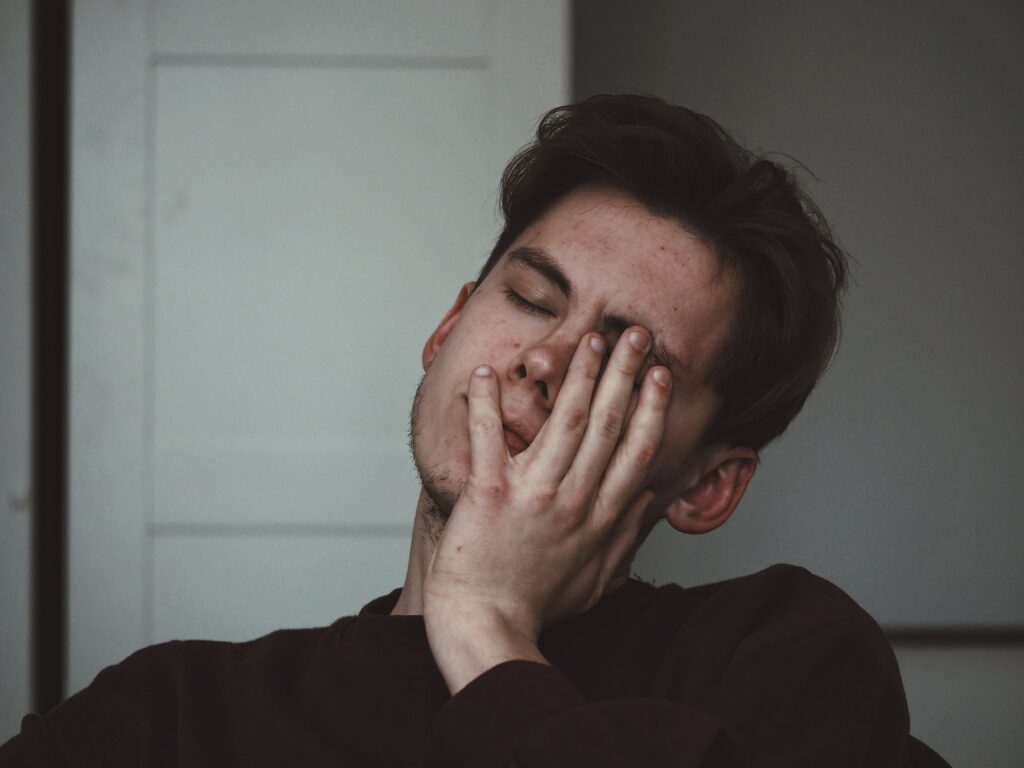OPIOID ADDICTION
Understanding Opioid Abuse and Opioid Use Disorder
Opioid addiction is a chronic disease that causes serious physical and mental health problems, social issues, and can lead to financial turmoil. It is the powerful and uncontrollable urge to use these drugs, even when they are no longer medically required.
At Renaissance Recovery, we understand the dangers that opioids present. If you or a loved one is struggling with opioid addiction, please contact our team today and get the treatment process started.

What Are Opioids?
Over the past two decades, you may have heard about the opioid epidemic which has ravaged the United States, creating an increasing number of drug-addicted individuals often via prescription. So what are opioids, exactly?
This class of drug is a narcotic analgesic and includes all of the following opioids:
- Heroin
- Synthetic opioids like fentanyl
- Prescription painkillers like hydrocodone and oxycodone
This drug attaches to the opioid receptors in your brain, fundamentally changing your brain’s functionality and can create what’s called drug dependence, which can lead to opioid addiction. In the short-term, opioids can help reduce anxiety and pain. Opioids numb both the mind and body, and can also bring about common side effects like drowsiness and nausea.
Opioids are a class of drug that affect the nervous system and attach to opioid receptors in the brain to produce pleasurable feelings and pain relief. Many opioid pain relievers are legally prescribed by healthcare providers to help patients with chronic pain management.

Examples of Opioids
Some of the most common forms of opioid drugs include the following.
Common Opioids:
- Oxycodone, brand name OxyContin
- Hydrocodone, brand name Vicodin
- Meperidine, brand name Demerol
- Codeine
- Fentanyl
- Methadone
- Morphine
Along with these prescription medications, heroin is also an opioid as it is derived from the opium plant and is an opiate-based substance.
Opioids have been in the spotlight in recent years as the Opioid Epidemic has become more prominent. Despite how often they are prescribed, opioids have a high potential for addiction, even when prescribed properly and taken as instructed. This can cause people to develop a substance use disorder and, in some cases, a trip to the emergency department.

Opioid Use Effects
When opioids are abused, this triggers a sense of euphoria. While fleeting, a desire to experience this feeling again is responsible for many people perpetuating this cycle of abuse, leading to opioid use disorder or even prescription opioids addiction.
Opioid Tolerance
Tolerance to opioids builds rapidly, meaning you’ll need more of the drug to achieve the same effects, whether that drug is heroin, prescription opioids, or the deadly fentanyl. Dependence and addiction often (though not always) follow.

Fight Back Against Opioid Addiction
Get evidence-based treatment to overcome opioid addiction at Renaissance Recovery. Call our team now to learn more about the process.

Opioid Addiction Treatment
While addiction to these forms of medication can be common, those who develop a substance abuse problem have addiction treatment options available. Renaissance Recovery has an Orange County rehab and other programs to help all those who need it. If you are looking for California rehab rehab treatment centers, don’t hesitate to reach out today.
Here is a list of the most frequent adverse outcomes of treating opioid dependency:
Adverse outcomes of opioid use
- Weakened immune system
- Nausea
- Vomiting
- Slowed rate of breathing
- Hallucinations
- Heightened risk of HIV/AIDS
- Increased risk of hepatitis
- Collapsed veins
- Coma
If you or a loved one are addicted to opioids or are engaging in drug abuse, it’s recommended that you reach out for help, as opioid withdrawal symptoms can be extremely harmful if untreated. Treatments like MAT (medication assisted treatment) is available to help decrease the discomfort that individuals experience in detox. Opioid addiction treatment centers the most effective and safest option rather than choosing to detox at home, as opioid withdrawal symptoms can be severe and even fatal if not properly treated by medical professionals.


The Opioid Crisis and Opioid Overdose
When opioids are abused, this triggers a sense of euphoria. While fleeting, a desire to experience this feeling again is responsible for many people perpetuating this cycle of abuse, leading to opioid use disorder or even prescription opioids addiction.
Opioid Tolerance
Tolerance to opioids builds rapidly, meaning you’ll need more of the drug to achieve the same effects, whether that drug is heroin, prescription opioids, or the deadly fentanyl. Dependence and addiction often (though not always) follow.
Opioid Crisis Death Rates
The increased prescription of these drugs led to widespread misuse and abuse and it soon became clear that these drugs did have addictive potential as opioid overdoses began to increase. By 2017, over 47,000 Americans died as a result of opioid overdoses and the crisis began to evolve.
With so many people addicted to opioid prescription medications, they began looking for cheaper, easier-to-obtain alternatives, leading to many to begin heroin use to mimic these prescription drugs. Moreover, synthetic opioids like fentanyl, began to be mixed into other drugs by illicit drug manufacturers to increase addictiveness and maximize profits. Unfortunately, synthetic opioids like fentanyl are incredibly dangerous, even a miniscule amount of the substance is enough to cause problematic side effects like overdose.
The Opioid Crisis is a very complex issue and there is no quick-fix solution. While there have been legislative measures taken on both federal and state levels, there is still much more work to be done to spread awareness, reduce opiate use, and help those suffering get the treatment they need.

What Are Synthetic Opioids?
Synthetic opioids other than methadone played a part in over 31,000 deaths in the United States, according to 2018 data. This amounts to a 10% increase over the previous year and represents 67% of all opioid-related deaths that year.
Fentanyl is one of the most pressing factors driving this uptick in deaths at the hands of opioids. Law enforcement agencies report more positive tests for fentanyl, despite this not correlating with fentanyl prescribing rates. This points toward illegally manufactured fentanyl (IMF) being more culpable than pharmaceutical fentanyl.
Synthetic opioids is an umbrella term for either:
- Established manmade opiates
- Newer and less researched drugs with opiate-like effects
These substances are entirely synthesized in laboratories. We derive natural opioids, by contrast, from the seed pods of opium poppies.
Synthetic opioids work on the same targets in your brain as natural opioids like codeine and morphine. Users experience strong pain-relieving effects along with a sense of sedation and euphoria.


Opioids With No Medical Use
Some synthetic opioids are used for approved medical applications. Fentanyl is the most common of these, used for decades to treat chronic pain. When used in minuscule doses in a controlled setting, the drug is remarkably effective.
Other synthetic opioids have no approved medical use. The most popular examples of these are:
- AH-7921
- Carfentanil
- Acetyl-fentanyl (fentanyl analogs)
- U-47700 (commonly called pink)
Crossing between legal and illicit synthetic opioids, more and more fentanyl is now finding its way into street heroin, as well as some other drugs from this class.
The clandestine production of synthetic opioids related to fentanyl is not a new threat. Indeed, back in the 1970s, there was an explosion in the trafficking and abuse of fentanyl on the West Coast before an aggressive DEA campaign brought the problem under control.
The problem resurfaced, though. Since 2013, we have witnessed an increase in the trafficking and abuse of the following substances structurally similar to fentanyl:
Drugs similar to fentanyl
- 4-fluoroisobutyryl fentanyl
- Acetyl fentanyl
- Acryl fentanyl
- Beta-hydroxythiofentanyl
- Butyryl fentanyl
- Furanyl fentanyl
- U-47700

What Are Opioids Prescribed For?
While opioids were once mainly used to treat pain in late-stage cancer patients, doctors have been widely prescribing this medication to treat a variety of acute and chronic pain since the late 1990s.
Opioids as Prescription Drugs
When used precisely as described, opioids can help to effectively control acute pain, the pain you experience post-surgery, for instance. As the medication travels through your body, it attaches to your brain’s opioid receptors, releasing signals that disrupt your perception of pain, while at the same time increasing feelings of pleasure.
While generally safe when used as directed, risks are apparent when opioids are misused or abused. Unfortunately, what makes opioids so effective as painkillers can also make them dangerous when abused.
Low doses of opioids often induce sleepiness, but in higher doses this can result in your breathing and heart rate slowing so much it can have deadly consequences.
Primarily, though, it’s the rewarding and euphoric effects opioids deliver that gives them such a high potential for abuse and addiction.


Different Types of Opioids
Opioids can be broadly divided into the following categories:
Types of opioids
- Natural opiates: Morphine, codeine, and paramorphine (thebaine) are all natural opiates. These are alkaloid base chemical compounds occurring in plants like the opium poppy.
- Semi-synthetic opioids: Semi-synthetic opioids are made in labs from natural opiates. Common examples include oxycodone, hydrocodone, and hydromorphone. Heroin is also a semi-synthetic opioid.
- Synthetic opioids: Synthetic opioids are entirely manmade. These include methadone, tramadol, pethidine, fentanyl, and dextropropoxyphene. None of these drugs contain natural opiates.
Opioid painkillers come in many forms, including:
opioid painkillers
- Tablets
- Lozenges
- Liquids
- Skin patches
- Suppositories
Opioids can also be administered via injections or infusions.
Some types of opioids need to be prescribed in combination with other opioids. Long-acting opioids are used on an ongoing basis for pain management, while short-acting opioids can be used on demand to treat additional pain.
Heroin is an illegal opioid that’s highly addictive and has no sanctioned medical use.


What is Opioid Addiction?
Opioid addiction is a chronic disease that causes serious physical and mental health problems, social issues, and can lead to financial turmoil. It is the powerful and uncontrollable urge to use these drugs, even when they are no longer medically required.
This problem occurs when a person begins taking prescription or illicit opioids regularly, abusing them — this causes the body to build up a tolerance to the drug, requiring the user to take more to receive the desired effects. Eventually this becomes a cyclical problem in which the user needs the drugs in order to function properly in their day-to-day lives.
Sadly, this cycle can go further than this. Some of the warning signs of opioid abuse include, but are not limited to:
Signs of opioid use disorder
- Drowsiness
- Changes in sleep habits
- Weight loss
- Frequent flu-like symptoms
- Lack of hygiene
- Isolation from family or friends
- Stealing from family, friends, or businesses
- Financial difficulties
Opioid Addiction Treatment at Renaissance Recovery
If you have been abusing opioids, whether prescription drugs, heroin, or fentanyl, help is at hand here at Renaissance Recovery. If you abruptly stop taking opioids without medical liaison, this can be intensely uncomfortable, and possibly even fatal and our opioid treatment programs are here to offer you a safe, comfortable detox environment.
Renaissance Recovery Opioids rehab
Here at Renaissance, we offer a variety of personalized outpatient opiate addiction treatment programs to help you address the root cause of your opioid use disorder. With evidence-based medication-assisted treatment delivered in combination with psychotherapies like cognitive behavioral therapy (CBT) and dialectical behavior therapy (DBT), we’ll help minimize the discomfort of opioid withdrawal while creating a firm foundation for sustained recovery.
All you need to do to get started is reach out to the friendly Renaissance admissions team at 866.330.9449. Don’t allow yourself to become another statistic of the opioid epidemic.

